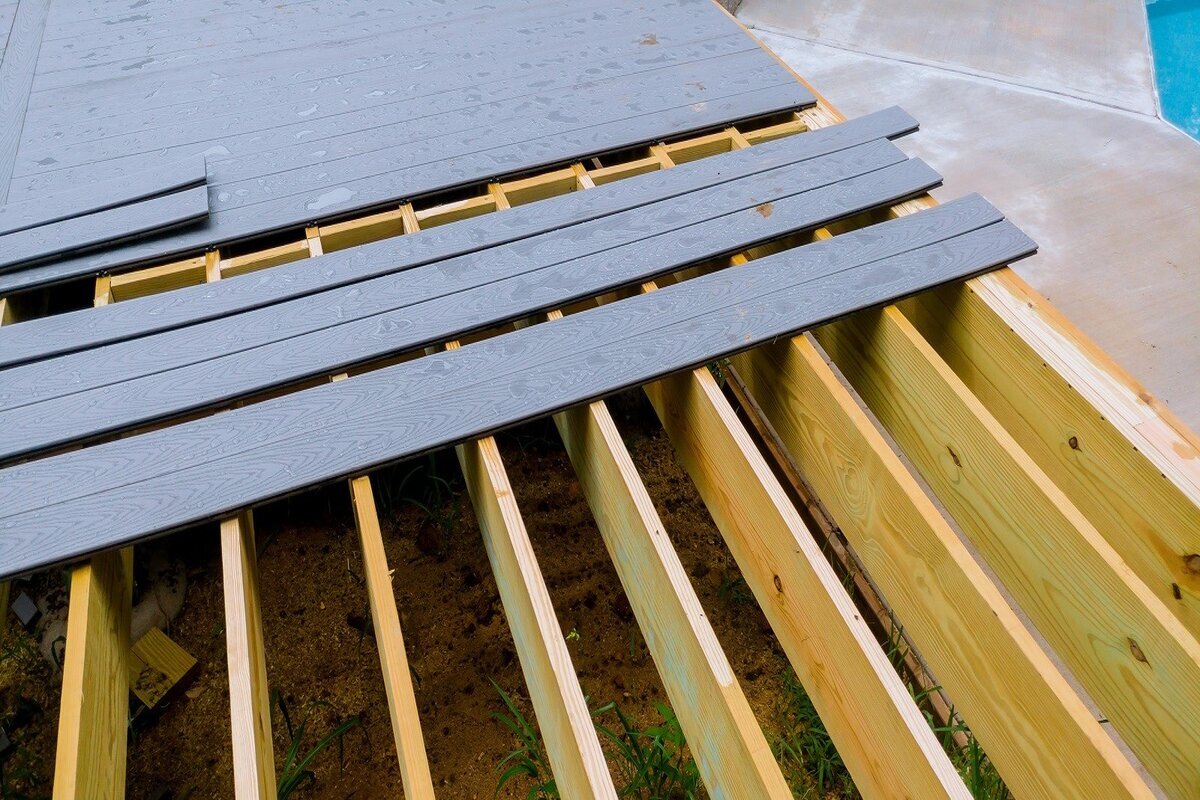Composite Decking vs uPVC Decking

Composite and uPVC decking are two popular deck options, each with distinct advantages. Composite decking offers a wood-like appearance with enhanced durability, while uPVC decking is lightweight, weather-resistant, and virtually maintenance-free. Understanding the differences will help you select the best option for your needs. Here’s what to consider before making your decision.
Composite Decking vs. uPVC Decking: Which is Right for You?
When selecting decking materials, it’s essential to understand the characteristics of each option.
Composite Decking
Composite decking is crafted from a blend of recycled wood fibers and plastic polymers. This combination offers the natural appearance of wood with enhanced durability. Manufacturers like Trex produce composite boards that are resistant to rot, insects, and fading, providing a low-maintenance solution for homeowners.
Pros:
- Aesthetic Appeal: Composite boards mimic the look of natural wood, providing a warm and inviting appearance.
- Durability: Resistant to rot, splintering, and insect damage, ensuring longevity.
- Low Maintenance: Requires minimal upkeep; occasional cleaning keeps it looking its best.
- Cost: Typically, composite decking is more affordable than PVC boards upfront, making it a cost-effective choice for many homeowners.
Cons:
- Heat Retention: Composite decking can become hot under direct sunlight, which might be uncomfortable for bare feet during peak summer months.
uPVC Decking
uPVC (unplasticized polyvinyl chloride) decking is made entirely from plastic, offering a different set of benefits. It’s known for its strength and ability to withstand various weather conditions.
Pros:
- Durability: uPVC is impervious to rot, mold, and insect damage, ensuring a long lifespan.
- Low Maintenance: Does not require staining or sealing; a simple wash suffices.
- Lightweight: Easier to handle and install due to its lighter weight compared to composite decking.
Cons:
- Aesthetic Limitations: Some homeowners feel that uPVC lacks the natural look of wood, giving it a more artificial appearance.
- Flexibility: uPVC decking can sometimes flex under heavy weight, which might be a concern in areas with significant foot traffic.
Why Choose Heartland Decks?
At Heartland Decks, we specialize in crafting custom composite decks tailored to your outdoor living aspirations. With over 30 years of experience in the Kansas City area, we pride ourselves on delivering high-quality craftsmanship and exceptional customer service. Our team is dedicated to understanding your vision and bringing it to life with the best materials and design practices. Whether you’re leaning towards composite decking for its natural appeal or considering other options, we’re here to guide you every step of the way.
In Summary
Choosing between composite and uPVC decking depends on your aesthetic preferences, maintenance expectations, and budget considerations. Composite decks offer a natural look with durability, while uPVC provides a low-maintenance, long-lasting alternative.
At Heartland Decks, we can help you explore these options to create the perfect outdoor space for your home. For more information or to discuss your project, please contact us.
Heartland Decks:
Husband Tested &
Wife Approved!
It's Time To Build Your Dream Deck & Give
Your Home the Backyard it Deserves
HEARTLAND DECKS
Office & Showroom
Administrative: By Appt. Only
contractor marketing & lead generation by: kcwebdesigner.com | kcseopro.com

